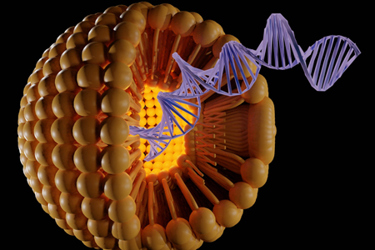Trees are essential parts of our environment, contributing to air quality, shade, and natural beauty. However, just like any living organism, they are vulnerable to diseases that can affect their health and longevity. Understanding the most common tree diseases and knowing when to seek professional care, such as tree services near me, is crucial in maintaining the health of your trees. This article explores some of the most widespread tree diseases, their symptoms, and how they can impact tree health.
Table of Contents
Toggle1. Dutch Elm Disease
Dutch Elm Disease (DED) is one of the most notorious tree diseases, affecting elm trees across the globe. It is caused by a fungus that spreads through the tree’s vascular system, ultimately leading to its death. The disease is primarily spread by bark beetles, which carry the fungus from one tree to another.
Symptoms of Dutch Elm Disease include yellowing and wilting leaves, which often start on one branch and gradually spread throughout the tree. The disease progresses quickly, and if left untreated, it can kill the tree within a season. Professional care is often necessary to manage Dutch Elm Disease, as infected branches need to be removed to prevent the spread of the fungus.
2. Oak Wilt
Oak Wilt is another severe tree disease that affects oak species, particularly red oaks. Like Dutch Elm Disease, it is a fungal infection that moves through the tree’s vascular system, cutting off water and nutrient supplies. The result is the rapid wilting and death of affected trees.
The first signs of Oak Wilt are wilting leaves, which can be mistaken for other issues, such as drought stress. However, the leaves quickly turn brown and fall off, indicating the progression of the disease. Red oaks are especially vulnerable and can die within a few weeks of infection. Immediate action is needed if Oak Wilt is suspected, and tree services near you can provide professional assessment and treatment options to protect nearby oaks from infection.
3. Powdery Mildew
Unlike the fatal diseases mentioned earlier, Powdery Mildew is more of a cosmetic issue but still poses a threat to tree health if left unchecked. This fungal disease affects a wide range of tree species and manifests as a white or gray powdery substance on leaves and stems. While Powdery Mildew rarely kills a tree, it weakens the plant by affecting photosynthesis.
Powdery Mildew thrives in warm, dry conditions, and while it may not seem as dangerous as other tree diseases, it can stunt growth and reduce the tree’s overall vitality. Regular monitoring and proper care are necessary to control this disease. A local tree service near me can recommend fungicidal treatments and ensure your trees remain healthy.
4. Anthracnose
Anthracnose is a group of fungal diseases that affect a wide variety of trees, including maples, oaks, sycamores, and dogwoods. This disease causes dark, sunken spots on leaves, stems, and fruit, leading to premature leaf drop. While it doesn’t usually kill trees, severe cases can weaken them, making them more susceptible to other diseases or environmental stressors.
The symptoms of Anthracnose can be mistaken for other fungal infections, but the key signs include irregular leaf blotches and the curling of leaves. Infected trees may need regular monitoring, and professional care is often required to manage the disease and prevent its spread. In some cases, trimming infected branches may be necessary, which can be handled by tree services near you.
5. Root Rot
Root Rot is one of the most destructive diseases that affect trees, particularly those growing in poorly drained soil. It is caused by various fungi that thrive in wet conditions, attacking the tree’s root system and causing decay. Trees with Root Rot often exhibit stunted growth, yellowing leaves, and poor overall health. In advanced stages, the tree may lean or fall due to weakened roots.
Preventing Root Rot starts with ensuring proper soil drainage and avoiding overwatering. However, once the disease takes hold, it is challenging to manage, and the affected tree may need to be removed. A professional assessment from a local “tree services near me” can determine the severity of the disease and recommend the best course of action.
6. Fire Blight
Fire Blight is a bacterial disease that primarily affects fruit trees, such as apples and pears. The disease gets its name from the scorched appearance of infected branches, which turn black and shrivel. Fire Blight spreads quickly in warm, wet weather and can devastate orchards and landscape trees alike.
The early signs of Fire Blight include water-soaked lesions on leaves and stems, which gradually turn dark brown or black. The disease can be spread by insects, rain, or pruning tools, making it essential to maintain good hygiene when caring for infected trees. If caught early, the disease can be managed by removing infected branches and applying bactericides. Professional tree services near you can provide the expertise needed to contain and control Fire Blight in your landscape.
7. Canker Disease
Canker Disease is a fungal infection that affects a wide variety of trees, causing dead areas on the bark, branches, and stems. These sunken lesions, or cankers, can girdle branches, cutting off the flow of nutrients and water, which eventually leads to the death of the affected parts.
The first signs of Canker Disease are discolored or sunken areas on the bark. Over time, these areas can expand, causing significant damage to the tree. While Canker Disease can be managed with proper pruning and fungicide treatments, advanced cases may require professional intervention to prevent the spread of the disease. Consulting tree services near you can help determine the best treatment plan for infected trees.
How Tree Services Help with Tree Disease Management
Tree diseases can progress quickly, and once they take hold, they are often difficult to manage without professional help. Certified arborists and tree care experts can diagnose diseases, recommend treatments, and take preventive measures to protect your trees. Whether you are dealing with Oak Wilt, Dutch Elm Disease, or Fire Blight, timely intervention can save your trees and preserve your landscape.
Tree care professionals offer a range of services, from disease diagnosis to tree pruning and removal, ensuring that your trees receive the proper care. If you suspect your trees are suffering from disease, contacting tree services near you can help protect both your trees and property.
1. Signs Your Tree May Be Suffering from Disease
Understanding the early signs of tree diseases can help you take preventive measures before the situation worsens. Trees often display visible indicators when they are under attack by pests or infections. Detecting these signs early can prevent the disease from spreading and save the tree.
- Discolored or wilting leaves are often an early warning sign that the tree is struggling.
- Bark lesions or spots, such as cankers, indicate fungal or bacterial infections that can spread.
- If you notice that branches are dying back from the tips or the crown of the tree is thinning, it may be a sign of a deeper issue within the tree’s vascular system.
2. How Environmental Stress Can Lead to Tree Diseases
Trees exposed to environmental stress, such as drought or poor soil conditions, are more vulnerable to diseases. These stresses weaken a tree’s natural defenses, making it easier for infections to take hold. Understanding how external factors impact tree health can help you protect your trees.
- Extended periods of drought reduce a tree’s ability to absorb nutrients, leading to weakened roots.
- Poor soil drainage can create an environment where fungi, such as Root Rot, thrive and damage the tree.
- Trees growing in overly shaded areas may develop leaf diseases due to inadequate sunlight and airflow.
3. The Importance of Regular Tree Health Monitoring
Regularly checking your trees for signs of disease is essential to maintaining their health. Tree health monitoring allows you to catch problems before they become severe, potentially saving the tree and preventing the spread of disease to others in the landscape.
- Regular inspections help identify changes in leaf color, shape, or overall growth patterns.
- Hiring an arborist for annual assessments ensures professional advice on tree care and disease prevention.
- Catching diseases like Anthracnose or Powdery Mildew early prevents long-term damage, especially when combined with proper pruning and treatment techniques.
Conclusion:
Tree diseases pose a significant threat to the health and safety of your landscape. From deadly infections like Dutch Elm Disease and Oak Wilt to cosmetic issues such as Powdery Mildew, timely intervention is crucial. Regular monitoring, proper pruning, and professional treatments can prevent the spread of disease and keep your trees healthy for years to come. If you notice signs of disease, such as wilting leaves, cankers, or root rot, don’t wait to seek professional help. Contacting tree services near me can ensure your trees receive the care they need to thrive.



